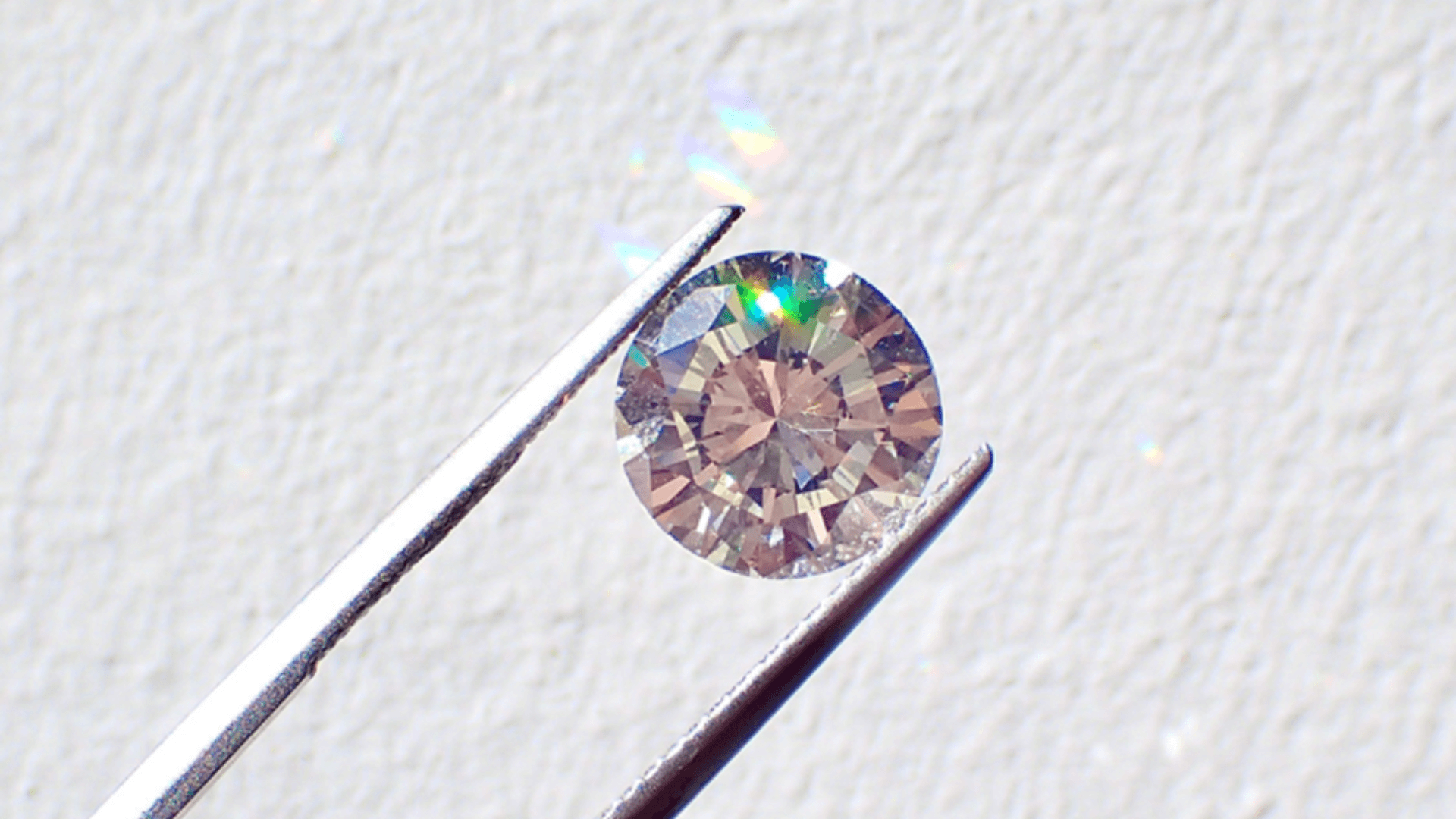Lab-grown diamonds can have color. One of the benefits of producing diamonds in a laboratory setting is the ability to manipulate and control the color of the diamond. Lab-grown diamonds can be produced in blue, pink, yellow, green, and even black.
Lab-grown diamonds, also known as “man-made” or “cultured” diamonds, are an alternative to traditionally mined diamonds created in a controlled laboratory environment.
As the demand for sustainable and ethical sources of diamonds increases, lab-grown diamonds are gaining popularity.
This opens new possibilities for consumers looking for unique and eye-catching diamond jewelry.
In this post, we’ll dive deeper into the world of lab diamonds and explore the various colors that they come in.
Whether you’re in the market for a diamond or simply curious about the advancements in the industry, this post will provide you with a comprehensive overview of lab-grown diamonds and the colors they can come in.
So, let’s get started!
Important things to know about diamond color
- Diamonds come in various colors, including yellow, pink, blue, and black.
- Colors in diamonds range from D (colorless) to Z (light yellow, brown, or gray).
- Diamond color is affected by cuts, clarity, and environment.
- The color of a diamond can also be enhanced through treatments such as irradiation and coating.
- Color is an essential factor to consider when selecting a diamond.
Are lab-grown diamonds colorless?
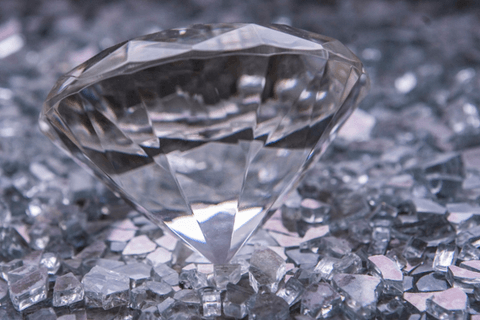
Lab-grown diamonds can come in various colors including colorless ones. The color of a lab-grown diamond is determined by the growth process and can range from colorless to fancy colored.
Colorless lab diamonds are created in a laboratory environment using advanced technology and are designed to mimic the look of naturally occurring diamonds.
The goal is to create a visually identical diamond to a naturally mined diamond, making it difficult for the average person to tell the difference.
Lab-grown diamonds offer a wider range of color options. Unlike natural diamonds, the color of lab-grown diamonds can be manipulated and controlled during the growth process.
This results in an array of colored diamonds, including rare and unique shades such as blue, pink, yellow, green, and black.
Lab-made diamonds are just as durable and rugged as natural diamonds, making them suitable for engagement rings and other jewelry pieces.
Lab-grown diamonds offer a cost-effective and sustainable alternative. Not only are they more affordable than natural diamonds, but their creation process also eliminates the need for harmful mining activities, making them an eco-friendly choice.
Can lab-grown diamonds be colored?
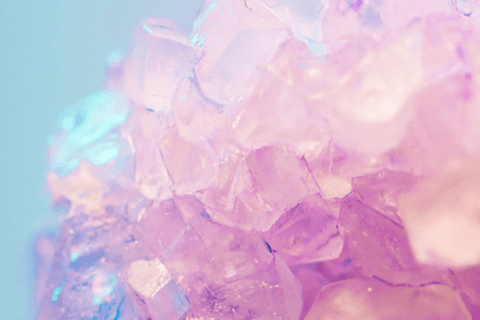
Lab diamonds can be colored. Creating lab-grown diamonds involves growing a diamond crystal in a laboratory setting. This process allows manipulating and controlling the diamond’s properties, including its color.
By controlling the conditions under which the diamond is grown, it is possible to create colored diamonds, including blue, pink, yellow, green, and black.
This ability to control the color of lab-created diamonds and create colored diamonds sets them apart from naturally occurring diamonds, typically found in shades of yellow and brown.
Yellow gold and colored diamonds are a visually stunning and unique alternative to traditional diamonds, growing in popularity among consumers who prioritize eco-friendliness and ethics.
What colors can lab-grown diamonds have?
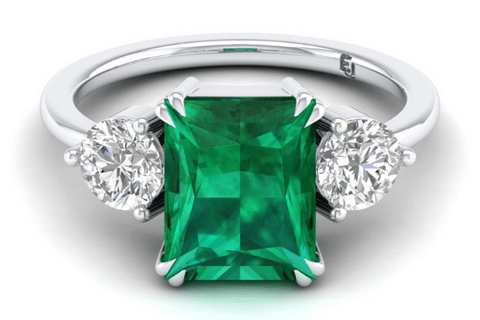
Lab-grown diamonds can come in various colors, including traditional colorless diamonds and other hues. The most popular colored diamonds include blue, pink, yellow, green, and black.
A truly unique look can be achieved by using accent diamonds in this way. Accent diamonds are tiny diamonds that provide an extra sparkle or accent to an existing piece of jewelry.
Consider the color of the center diamond when selecting other diamonds for the piece. The color of the center diamond should be matched with other diamonds used in the piece to create a cohesive look.
Matching center diamond color ensures that each diamond has the same color grade, allowing the piece to have a consistent and beautiful appearance.
Lab diamonds are also available in fancy cuts and shapes, including round, princess, emerald, and marquise. The diamond’s cut and shape will affect the diamond’s color, as well as its sparkle and brilliance. The cuts and shapes of lab diamonds are just as intricate and beautiful as those of natural diamonds.
How do diamonds get their color?
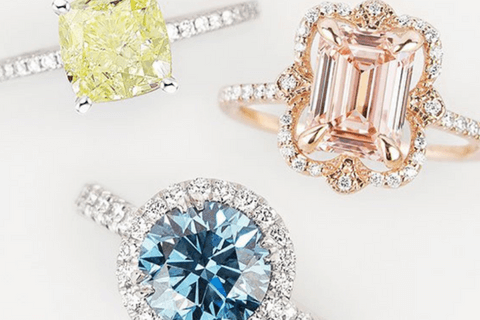
Diamonds get their color from impurities or structural anomalies within the crystal structure. These impurities or anomalies can occur naturally during the formation of the diamond, or they can be introduced during the growth of the diamond in a laboratory setting.
The most common impurities that cause color for naturally occurring diamonds are nitrogen and boron, which can give diamonds a yellow or blue hue.
Other impurities, such as iron, titanium, and chromium, can also cause diamonds to appear yellow, green, pink, brown, or red.
In some cases, diamonds can be exposed to radiation, high pressure, and high-temperature conditions, which can also cause the color to form.
Unlike natural diamonds, the color of lab-grown diamonds can be controlled and manipulated during growth.
By carefully controlling the conditions under which the diamond is grown, scientists can create diamonds in various colors, including blue, pink, yellow, green, and black.
The lab-created diamonds color scale
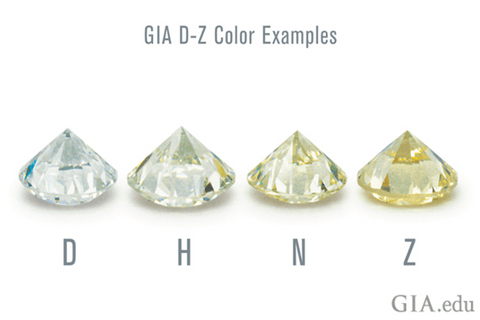
The color scale for lab-grown diamonds is similar to that used for natural diamonds. The International Gemological Institute (IGI) has developed a system for grading the color of diamonds, known as the IGI Diamond Color Scale. This scale ranges from D (totally colorless) to Z (light yellow or brown).
The color scale ranges from colorless to light yellow or light brown for lab-grown diamonds. The colors of lab-grown diamonds can also include hues such as blue, pink, yellow, green, and even black.
When grading the color of a lab-grown diamond, the IGI considers the color’s hue, tone, and saturation to determine its place on the color scale.
You should aim for an H grade or higher, and try to get an F color or above. The price of lab-created diamonds is so low that there is no need to compromise on color so much.
The diamond should always be inspected under natural light and from the side. In yellow gold and rose gold settings, the color of the metal is reflected in the diamond, giving the stone a deeper color.
You may also like: Is IGI A Good Diamond Certification?
Does the color of a lab-created diamond affect its value and price?
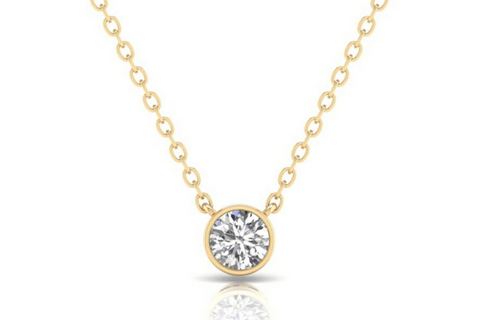
The color of a lab-grown diamond can affect its value and price. In general, the more intense and vibrant the color of the diamond, the more valuable it is. This is especially true for lab-grown diamonds in colors other than colorless, such as blue, yellow, green, black, and pink diamonds, as these colors are rarer and sought after.
However, the value of a lab-grown diamond is also determined by other factors, such as its clarity, cut, and carat weight. A diamond with high clarity, a good cut, and a high carat weight will generally be more valuable, regardless of its color.
Lab diamonds have various clarity grades, ranging from I3 to FL. The clarity grade of the diamond will affect its price, as the higher the clarity grade, the more expensive the diamond will be.
In addition, the size of the diamond will also affect its value, with larger diamonds being more expensive than smaller ones.
Also note that lab-grown diamonds are still a relatively new product, and the market for them is still developing. As such, the value and price of lab-grown diamonds can vary greatly, depending on factors such as supply and demand and the quality and rarity of the diamond.
How does the fluorescence of lab diamonds affect their color?
Lab diamonds often emit visible light when exposed to ultraviolet radiation. This phenomenon is known as fluorescence, and it can cause the diamond to appear as if it is glowing. The absorption of the UV light causes this glow by the diamond and its subsequent re-emission as visible light.
The glow can affect the perceived color of the diamond, making it appear lighter or darker than it would without fluorescence.
Additionally, the fluorescence color can also impact the color of the diamond. For example, in lab-grown diamonds, fluorescence can affect the color of the diamond in several ways.
Strong fluorescence can cause the diamond to appear milky or hazy, which can detract from its beauty and lower its value. On the other hand, a weak fluorescence can enhance the color of the diamond and make it appear brighter and more vivid.
The effect of fluorescence on the color of a lab-grown diamond will depend on several factors, including the type and intensity of the fluorescence and the specific color of the diamond.
Some colors, such as yellow or brown, may be more affected by fluorescence than others, such as blue or green.
An external factor, such as the environment or lighting, can also affect the fluorescence of a lab diamond.
These factors can cause the diamond to appear differently than it would in different conditions. As such, careful consideration should be taken when evaluating the color of a lab diamond.
Choosing between rare or lab-grown colored diamonds
Choosing between rare or lab-grown colored diamonds depends on your preferences and what you value most in a diamond. However, it is essential to consider factors such as rarity, eco-friendliness, affordability, and the story behind the diamond before making a decision.
Natural-colored diamonds, also known as fancy diamonds, are rare and valuable due to their scarcity. They are formed by nature, and impurities and structural defects cause color.
When it comes to rare, natural diamonds, the main benefit is that they are naturally occurring and thus rarer than lab-grown diamonds. The downside is that they may cost significantly more than lab-grown diamonds due to their scarcity.
On the other hand, lab-grown colored diamonds allow for a broader range of colors and are often more affordable than natural-colored diamonds.
The only difference between lab-grown diamonds and natural diamonds is the method of production. Since lab-grown diamonds are created in labs, their chemical, physical, and optical characteristics are identical to those of natural diamonds.
The main benefit of lab-grown diamonds is that they tend to be less expensive than natural diamonds due to the lower cost of production.
However, the downside of lab-grown diamonds is that they lack the same rarity as mined diamonds and thus may not retain their value over time.
Choosing the right color
Lab-grown diamonds offer a wide range of colors and shades as they are cultivated in a controlled environment. When choosing the right color for your lab diamond, it is essential to understand the different color grades and how they might impact the value of your diamond.
Color grades for diamonds are determined by the Gemological Institute of America (GIA), the world’s foremost authority on diamonds. The GIA color scale ranges from D-Z, with D being the most colorless and Z being the most yellow or brown.
When choosing a lab-grown diamond, the GIA color scale can be a helpful guide. Generally, diamonds on the lower end of the scale are less expensive, while those on the higher end are more expensive.
However, it’s important to note that even two diamonds with the same color grade can have subtle differences in their overall appearance.
When selecting a lab diamond, look for a combination of quality, price, and aesthetics. Consider the diamond’s cut, clarity, and size in addition to its color. With these factors in mind, you can find the perfect lab diamond for your needs.
Takeaway: Discover the world of lab-grown diamonds, from colorless to vibrant hues
Lab-grown diamonds are a versatile and colorful option for those in the market for a diamond. These diamonds are created in a lab setting and can come in various colors, from traditional white to pink, blue, yellow, and more.
They are also more eco-friendly and often more affordable than natural diamonds.
Lab-grown diamonds can indeed have color, just like natural diamonds. The color in lab-grown diamonds is created by adding specific trace elements during the growth process.
These diamonds are becoming increasingly popular as a more ethical and eco-friendly alternative to natural diamonds.
It’s always better to go to a reputable jeweler when buying a diamond for the best experience. Shop at Etika Jewels to select the best diamond collection
